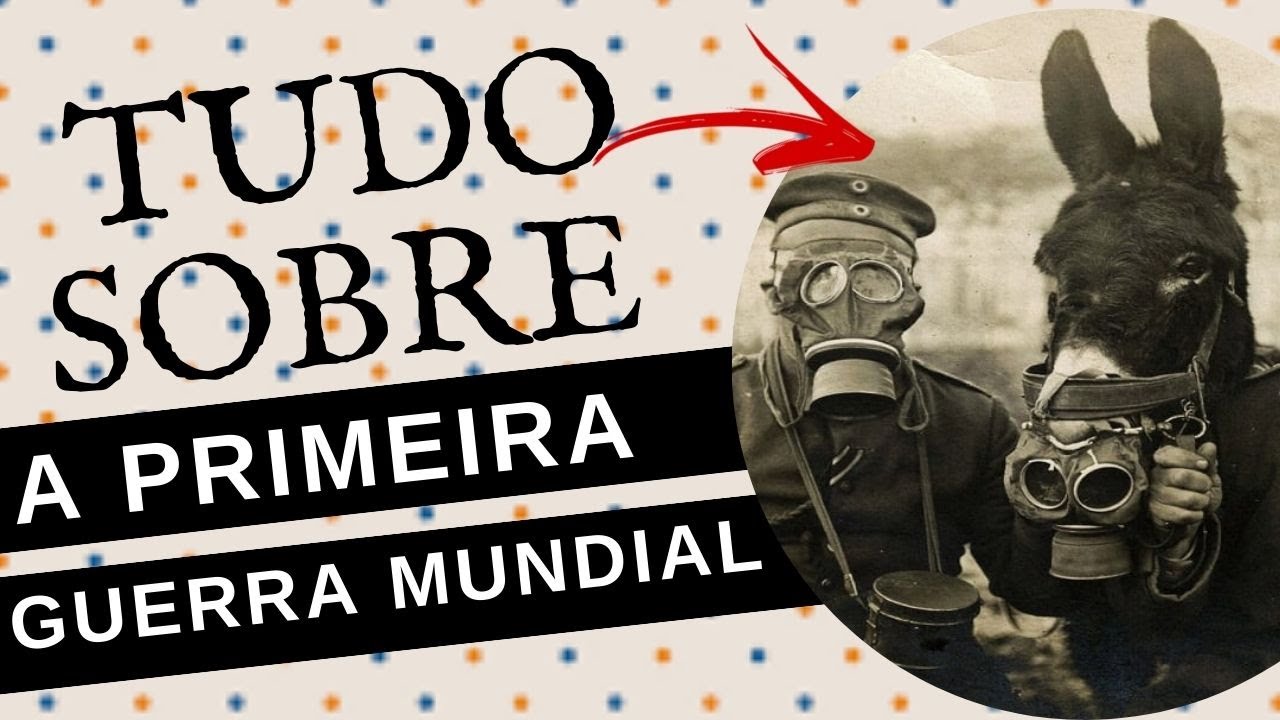Perang Dunia 1 dan Pengaruhnya bagi Indonesia
Summary
TLDRThe script explores the significant impact of World War I on Indonesia, highlighting key historical changes. It discusses the collapse of European monarchies, the devastating Spanish flu, and the rise of extremist leaders like Hitler and Lenin, which set the stage for World War II. Additionally, it examines the militarization of Dutch Indonesia, the birth of communism, and the surge of nationalist movements, culminating in the youth oath of 1928. Overall, the narrative illustrates how global events reshaped Indonesia's path towards independence and its national identity.
Takeaways
- 🌍 World War I is often seen as unrelated to Indonesia, but it had significant impacts on the country's historical trajectory.
- 👑 The war led to the collapse of European monarchies, creating opportunities for extremists to rise in power.
- 🦠 The Spanish flu pandemic followed World War I, resulting in more deaths than the war itself and eroding public support for governments.
- 💥 Extremist leaders such as Hitler, Mussolini, and Lenin gained traction due to public disillusionment after the war and economic crises.
- 🔫 The Dutch colonial government militarized its Indonesian territories in response to fears stemming from World War I.
- 🏭 The establishment of military factories in Indonesia, such as PT Pindad, was a direct result of the war's influence.
- ✊ Communism became more potent post-World War I, with the Soviet Union spreading its ideology globally, including in Indonesia.
- 📈 The end of World War I sparked national movements across Europe, inspiring independence aspirations in colonized countries like Indonesia.
- 🇮🇩 The nationalist sentiments in Indonesia culminated in the Youth Oath of 1928, promoting unity among Indonesians.
- 🔄 Overall, World War I reshaped Indonesia's political landscape and laid the groundwork for its eventual struggle for independence.
Q & A
How did World War I impact the monarchy system in Europe?
-World War I significantly weakened many European monarchies, leading to their collapse. This shift allowed extremists and separatists to rise, seeking power in the resulting political vacuum.
What role did the Spanish flu play following World War I?
-The Spanish flu emerged after World War I, exacerbating the devastation in Europe. Governments struggling to maintain control lost even more support as they were unprepared for this health crisis, which caused more deaths than the war itself.
Who were some of the prominent extremists that emerged after World War I?
-Notable extremists that rose during this period included Hitler, Mussolini, and Lenin. Their rise was fueled by public discontent due to economic failures and political instability.
What was the consequence of the economic destruction left by World War I?
-The economic devastation led to widespread public discontent, which allowed extremist ideologies to gain traction as people sought new solutions to their struggles, ultimately resulting in the outbreak of World War II.
How did the militarization of Dutch-style forces in Indonesia relate to World War I?
-Following World War I, the Dutch increased their military presence in Indonesia by arming local soldiers, leading to the establishment of military organizations like KNIL and eventually local weapons manufacturing facilities.
What was the significance of the PETA organization in Indonesia?
-PETA, which stands for 'Pasukan Pembela Tanah Air,' was a military organization formed by Japan during World War II but was influenced by earlier Dutch military practices, reflecting a growing trend of militarization in Indonesia.
Did World War I contribute to the rise of communism?
-Yes, World War I played a critical role in the rise of communism, particularly following the Russian Revolution, as the Soviet Union sought to expand its influence by supporting communist movements in other countries, including Indonesia.
What was the outcome of the communist rebellion in Indonesia in 1926?
-The communist rebellion in Indonesia in 1926 was ultimately suppressed by colonial forces, demonstrating the challenges faced by revolutionary movements in the region.
How did the end of World War I inspire national movements in Indonesia?
-The end of World War I inspired national movements in Indonesia as examples of newly independent countries emerged in Europe, leading to a sense of possibility and a revival of nationalistic sentiments among various Indonesian groups.
What was the Youth Oath of 1928, and why is it significant?
-The Youth Oath of 1928 is significant as it articulated a unified Indonesian identity, emphasizing a shared homeland, language, and nation, which became a foundational moment for Indonesia's national awakening and independence movement.
Outlines

このセクションは有料ユーザー限定です。 アクセスするには、アップグレードをお願いします。
今すぐアップグレードMindmap

このセクションは有料ユーザー限定です。 アクセスするには、アップグレードをお願いします。
今すぐアップグレードKeywords

このセクションは有料ユーザー限定です。 アクセスするには、アップグレードをお願いします。
今すぐアップグレードHighlights

このセクションは有料ユーザー限定です。 アクセスするには、アップグレードをお願いします。
今すぐアップグレードTranscripts

このセクションは有料ユーザー限定です。 アクセスするには、アップグレードをお願いします。
今すぐアップグレード関連動画をさらに表示

Sejarah Perang Dunia I: Perang 3 Raja Sepupuan?

Tugas Kelompok Sejarah, Perang Dunia Ke-1 & Ke-2

Independence movements in the 20th Century | World History | Khan Academy

World War I: Memories of the Great War (a History Talk podcast)

TUDO SOBRE A PRIMEIRA GUERRA MUNDIAL

Why World War 1 happened? | The Real Reason | Dhruv Rathee
5.0 / 5 (0 votes)
